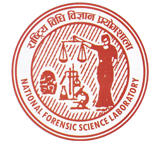- Home
- About Us
- Technical Units
- Examination Fee
-
Publication
-
Syllabus
- Senior Scientific Officer (8th level)
- Senior Administrative Officer (8th level)
- Scientific Officer (7th level)
- Asst. Scientific Officer (6th level)
- Asst. Computer Officer (6th level)
- Asst. Administrative Officer & Account Officer (6th level)
- Scientific Assistant (5th level)
- Computer Operator (5th level)
- Asst. Administrative & Accountant (5th level)
- Asst. Librarian (5th level)
- Lab Technician (4th level)
- Office Asst. & Account Asst. (4th level)
- Gathan Aadesh
- Annual Report
- Articles
- Download
-
Syllabus
- Information Center
- Gallery
- Contact Us
Identification of Designer Drugs using Gas Chromatography High-Resolution Mass Spectrometry and A Soft-Ionization Source
GC-MS with conventional EI using 70 eV electrons is often preferred over LC-MS, despite the fact that for certain applications derivatization is needed to reduce polarity and increase analyte volatility, because of its higher sensitivity, far better chromatographic resolution of the GC column as compared to the LC column and the low susceptibility to matrix effects in the case of biological samples [5]. Among the LC-MS approaches, LC-atmospheric pressure chemical ionization (APCI) was found to work very well for a series of illicit designer drugs including MDA (3,4-methylenedioxy-amphetamine), MDMA (3,4-methylenedioxymethamphetamine), and MDEA (3,4-methylenedioxyethylamphetamine) because of the soft ionization achieved with the APCI source, thus yielding very abundant molecular ions [6]. The use of LC-high resolution MS (i.e., TOFMS and Orbitrap systems) in clinical toxicology, which has been discussed in detail by Wu et al. [7], offered unique opportunities in clinical analysis of untargeted drugs because ESI is a soft ionization yielding intact molecular ions, and high resolution facilitated the generation of molecular formulae of such ions. A HR-MS system [i.e., quadrupole(Q) TOFMS], interfaced to a GC was not commercially available until early 2012, and a HR TOFMS is not yet available commercially.

